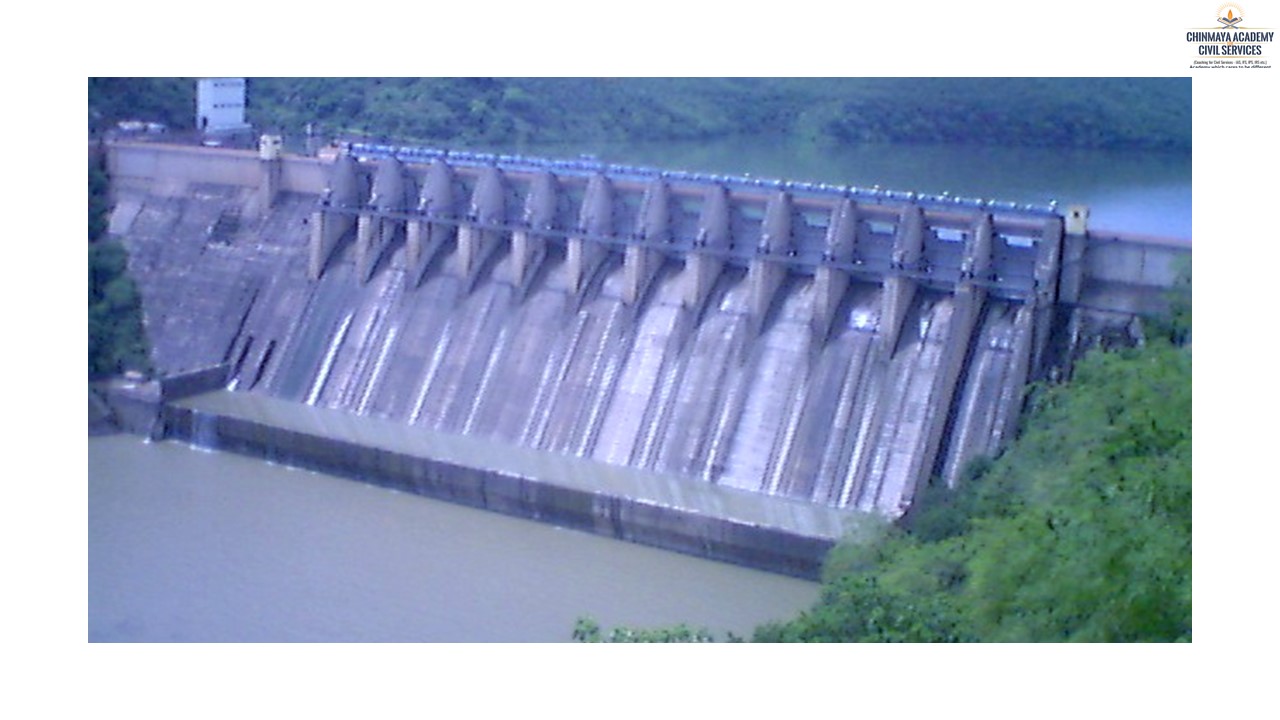
Dam means any artificial barrier and its appurtenant structure constructed across rivers or tributaries thereof with a view to impound or divert water which also include barrage, weir and similar water impounding structures.
Central Water Commission (CWC) compiles and maintains the nationwide register of Large Dams i.e., the National Register of Large Dams (NRLD), as per information provided by dam owners. As per NRLD 2019, the country has 5334 completed large dams and 411 under-construction large dams.
Dams in India are maintained under the following projects, policies and authorities:
National Hydrology Project
A World Bank supported the Central Sector Scheme for the National Hydrology Project (NHP) and the establishment of the National Water Informatics Centre (NWIC) as a repository of nationwide water resources data.
Objective
- to improve the extent, quality, and accessibility of water resources information
- to strengthen the capacity of targeted water resources management institutions in India.
- Central Sector Scheme, with 100% grant to the States
- Timeline: 8 years from 2016-17 to 2023-24
Project Components
- Water Resources Monitoring Systems
- Water Resources Information Systems (WRIS)
- Water Resources Operations and Planning Systems
- Institutional Capacity Enhancement
Dam Safety Act, 2021
An Act to provide for the surveillance, inspection, operation, and maintenance of the specified dam for prevention of dam failure related disasters and to provide for an institutional mechanism to ensure their safe functioning.
It provides for establishment of the following bodies:
National Committee on Dam Safety
- Headed by chairperson of Central Water Commission
- The members of the body are reconstituted every three years.
- Functions include formulating policies and regulations regarding dam safety, analyzing the causes of major dam failures, and suggesting changes in dam safety practices.
National Dam Safety Authority
- To implement the policy, guidelines and standards evolved by the National Committee for proper surveillance, inspection and maintenance of specified dams
- All decisions taken by the body are final and binding on the parties.
State Committee on Dam Safety
- Functions to prevent dam failure related disasters as per guidelines, standards and other directions on dam safety issued by the Authority.
- The committee shall meet twice in a year and one meeting shall be held before the onset of the monsoon season.
State Dam Safety Organization
- All State Dam Safety Organization functions include
- keep perpetual surveillance
- carry out inspections
- monitor the operation and maintenance
of all specified dams falling under their jurisdiction
The act enumerates responsibility of Dam owners
- to provide a dam safety unit in each dam
- inspect the dams before and after the monsoon session, and during and after any calamity or sign of distress
- to prepare an emergency action plan, and carry out risk assessment studies for each dam.
Dam Rehabilitation and Improvement Programme
Government of India, with financial assistance from the World Bank initiated the project in 2012. It was a State Sector Scheme with Central component. The Scheme had rehabilitation provision for 223 dams located in seven States (Jharkhand, Karnataka, Kerala, Madhya Pradesh, Odisha, Tamil Nadu and Uttarakhand).
Objective
- to improve the safety and operational performance of selected existing dams
- dam safety institutional strengthening with system wide management approach.
Dam Health and Rehabilitation Monitoring Application (DHARMA)
- web-based tool to capture important data for promote long term asset management, appropriate monitoring and development of rehabilitation protocols.
DRIP Phase II & Phase III
- This new Scheme has nineteen (19) States for 10 years duration.
- The Phase II is being co-financed by two multi-lateral funding Agencies – World Bank and Asian Infrastructure Investment Bank (AIIB).
India ranks third globally with 5264 large dams in operation and about 437 are under construction. But India too has had its share of dam failures. With the increasing number of dams becoming older, ensuring dam safety is essential for safeguarding investment, infrastructure, and lives of people living downstream of the dams.
Short News
| Electoral bonds case |
|
| Excluding single women from opting for surrogacy |
|
| Indo-Pacific and trade |
|
 Chinmaya IAS Academy – Current Affairs Chinmaya IAS Academy – Current Affairs
Chinmaya IAS Academy – Current Affairs Chinmaya IAS Academy – Current Affairs


